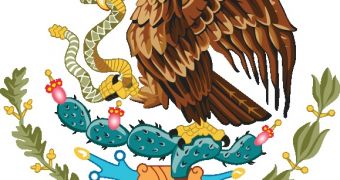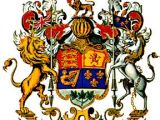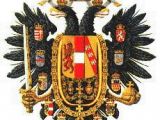Coats of arms have various symbols, from heads to hearts and even navels. Some are even older than 800 years.
It all started during the 12th century. The knights combating in tournaments had to be recognized from a distance. Each one, on his own way, adorned their shields. This is how the coat of arms appeared. In the turmoil of the Medieval Age, the nobles started using their blazon as a way of marking their goods and of displaying their power.
But the blazon was adopted rapidly by bourgeois, craftsmen and villagers. Most of them could not read and a blazon served as "seal" or signature.
At the beginning, the knights decorated their shields only with simple geometrical lines in bright colors. But soon, some started to decorate their shields with animals whose qualities they admired: lion for bravery, eagle for power, lamb for innocence and so on. During the 16th century, French king Francis I chose as coat of arms the salamander, believed to be able to cross unharmed through flames.
Other began to combine animals and plants, their blazons turning in real rebuses. Jean Racine, the 17th century French dramatist, had a blazon made of a rat and a swan.
Each family had its blazon, and only the older son inherited it from their fathers. The other sons had to wear a slightly changed coat of arms. This way, the blazon changed depending on the history of the family, alliances, achievements or dishonors. For example, the French king allowed one of his subjects to use a small lily flower, a symbol of royalty, this was an honor, but at the same time a promise of fidelity.
While the blazons turned more complex, they had to be rated. During the tournaments, the "heralds" yelled to the spectators, describing the blazons of the combating knights. The heralds are gone now, but the term heraldry was kept.
The colors of the medieval blazons were yellow ("gold"), white ("silver"), black ("sand"), red ("gules"), blue ("sky"), green ("sinople"). The "honorable pieces" were the geometrical forms adorning the blazon. Animals, plants and objects are the symbols of the blazon. These are either on the head (high), heart (in the middle) or navel (low).
Some coats of arms of the countries can tell a legend of their appearance. The Mexican coat of arms has an eagle, snake and cactus. It tells the legend of the origin of Mexico City, the capital, founded by the Aztecs (Mexica) during the 14th century.
The legend says that the Aztecs were on the search for a place to establish themselves. When they reached a rocky plateau, they saw an eagle on a cactus, devouring a snake. That was the sign they had been expecting from their gods.
The Austro-Hungarian blazon was represented by a two-headed eagle. One head looked eastward, the other westward, symbolizing an empire orientated at the same time to the west and east. The eagle was surrounded by the blazons of the realms and dukedoms making the empire. The dukedoms wore crowns having red bonnets and edged by white stout fur.
The 1204 blazon of Paris represented a boat, signaling that the first inhabitants of the city had been fishermen or sailors.
Canada has the slogan "From sea to sea" and its blazon unites the coats of arms of its founding countries: England (three yellow leopards over a red background), Ireland (a harp on a blue background), France (lily flowers over a blue background) and Scotland (a red lion over a yellow background). Down there are three maple leaves, the emblem of Canada.

 14 DAY TRIAL //
14 DAY TRIAL // 

